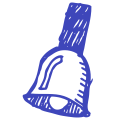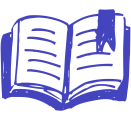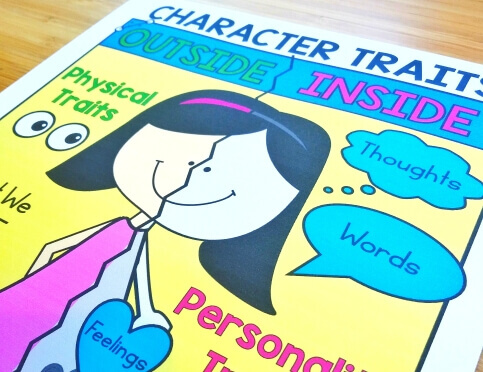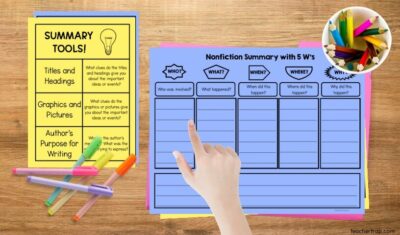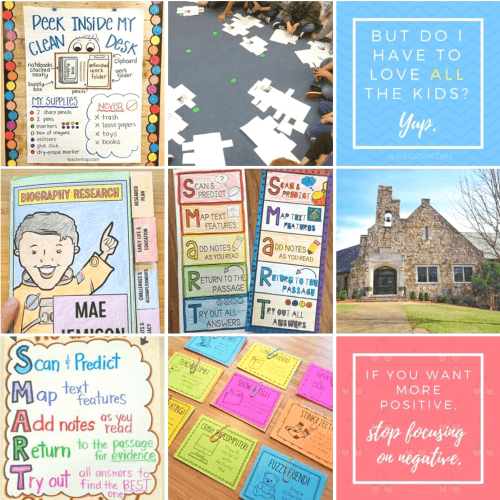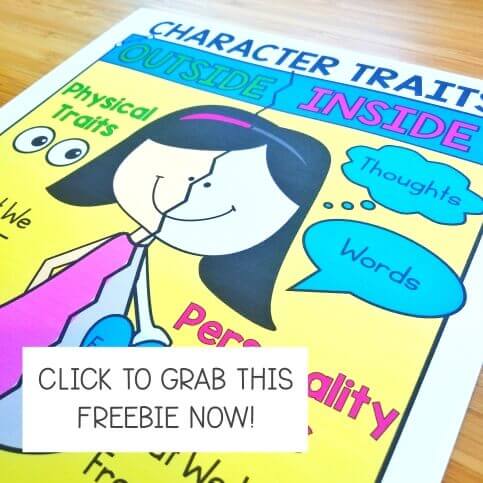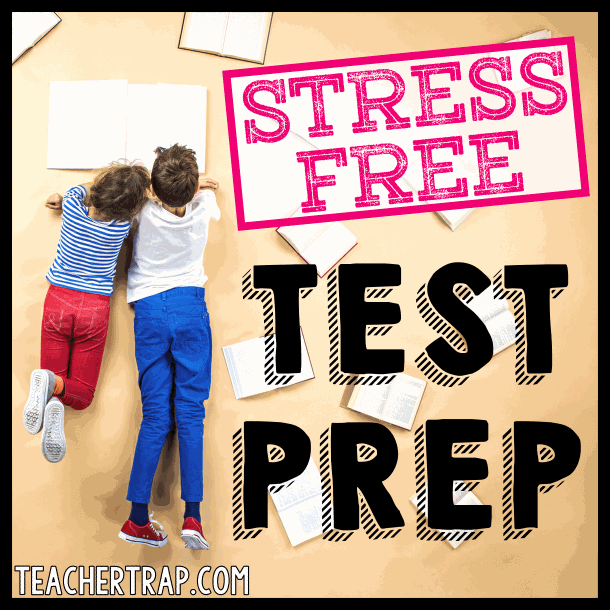
Today’s elementary students face standardized testing stress that most of us never experienced as children. The tests aren’t simply harder, they require critical thinking and test-taking skills that I didn’t need until high school or beyond! Because of this massive increase in rigor, teachers must develop new and creative ways of helping our kids prepare. The old “drill and kill” method just doesn’t cut anymore. We need a new kind of test prep!
Strategies for Test-Taking Success
Although I’d love to veer off into a rant about the problems of standardized testing and the effects on learning and children, I won’t. At least, not right now. 🙂 My goal for this post is to share some ideas that you can use today in your classroom! These activities are meant to make test prep a little less painful and a little more powerful! Engage your students in meaningFUL work, even if they’re preparing for a somewhat meaningLESS test…
#1: Teach the Standardized Testing GENRE
My first recommendation is to teach students about standardized testing as a GENRE. Kids must understand the standardized test genre in the same way they understand fiction or biography or poetry. When you are reading on a test, your purpose, process, and strategies may differ.
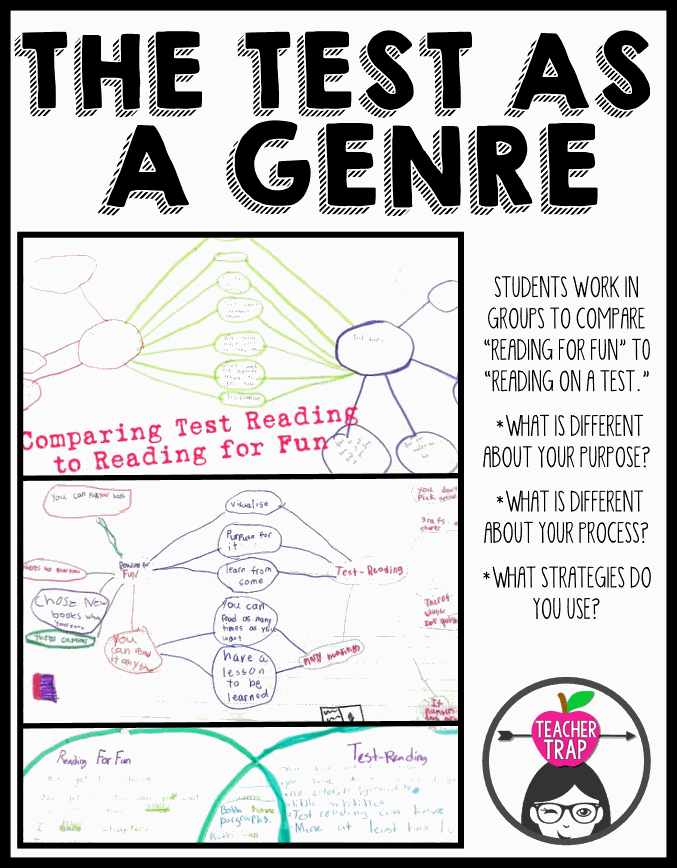
My kids worked in groups to compare “Reading for Fun” and “Test-Reading.” They immediately noticed some BIG differences. For example, when “reading for fun” you can choose what to read. You can start and stop as you like. You can abandon a book if you lose interest. You can look up a word if you don’t know what it means. Your purpose for reading is to be entertained or learn about a topic you like. When we switch to “Test-Reading,” we are reading so that we can answer questions. We are reading so that we can later show we understood our reading.
Students also noticed some important similarities. For example, we need our good reading comprehension strategies when both “Reading for Fun” and “Test-Reading.” Visualizing and making connections can help us with both types of reading. In both types, the author has still written for a purpose.
Even little ah-ha’s like “We read for fun everyday but we only take the big tests a few times a year,” are important! Or “I can write on the test and take notes, but I have to use sticky notes in my books.”
#2: Use Teamwork
Teamwork is important for test prep! Not only does working in groups help students make sense of the learning, it also builds confidence. (An important factor in test success!) Look for ways to build in discussion and encourage consensus among groups.
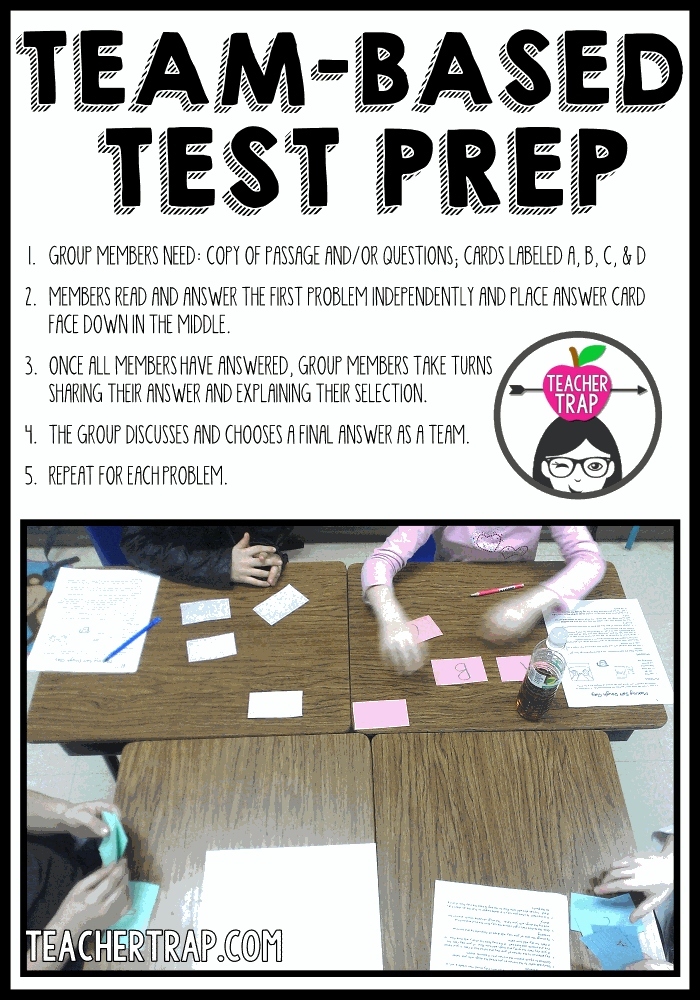
The strategy above works well for math or reading work. In the picture, you’ll notice a table group has been teamed up. Each member has a set of cards (labeled A,B,C,D) and a copy of the passage we were analyzing. I gave the entire class about 15 minutes to read the passage, highlight headings, and make any notes. Next, I displayed one question on the screen and we read it as a class. Students had 2 minutes(ish) of independent think time to look back at the passage and choose their answer. Next, each child placed their chosen answer card face down in the middle. Once all of the students made their selection, the group discussed. Each person in the group had a chance to explain their thinking and make a case for their selection. Last, the group must agree upon a final answer to be shared with the entire class. A representative from each group shares out and we discuss the final answer together.
I love when students or teams get passionate about their answer! The debates about the “right answer” are the most powerful part of this work. Students are forced to provide evidence and explain their thinking. And because the work is done in groups, shy or less confident kiddos are more likely to take a stand. (And when wrong, you’re wrong together!)
You can use this same process with word problems or math work of any kind. When I’ve done this with math, students use their personal whiteboards to first (secretly) work out the problem. The independent think and work time is a must if you want to keep all students engaged!
#3: Get Hands On!
Nothing wastes more time and causes more stress than doing endless reading passages. Reading passages are boring! Most test prep passages are based on topics that students have little to no interest in. They are run off in black and white, so even the graphics are lacking. If you want to torture your class and see minimal gains, do a reading passage a day!
That being said, we still have to give students experience with reading passages and teach them how to tackle this unique type of reading. My favorite way to do this is with lots of color coding and dissecting of reading passages. There’s something liberating about marking up and cutting apart these little stress-makers!
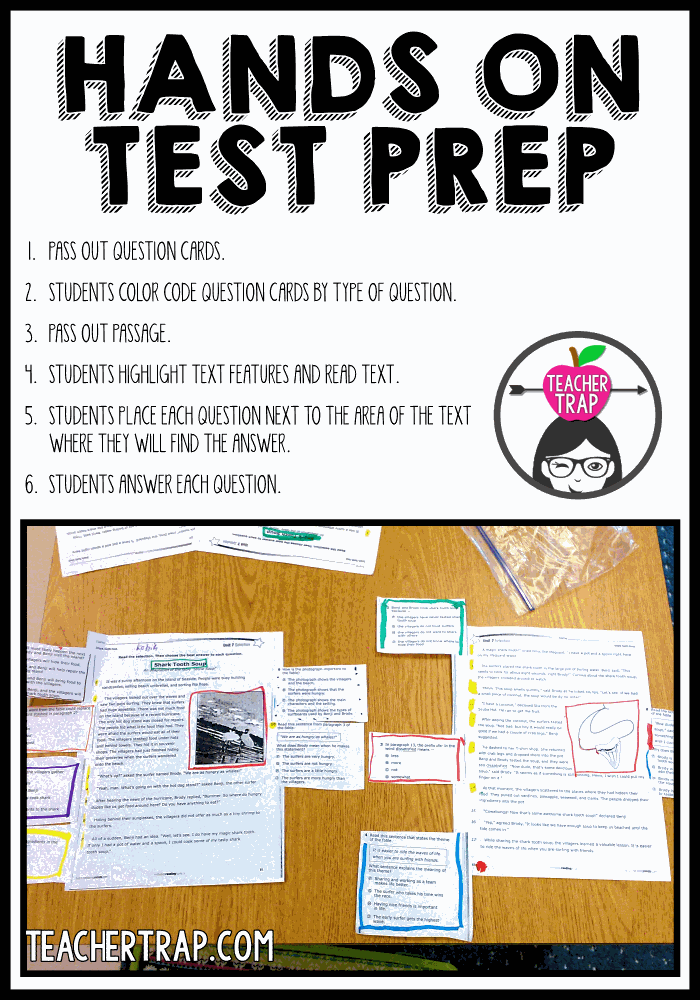
This process is amazing for those kiddos who hate “going back to the passage” and also helps kids identify the types of questions that can’t be answered by simply going back. After sorting and attaching all the questions, there will be a handful of questions that just don’t have a spot. These might be author’s purpose or summary questions. Students must learn to recognize questions that require synthesizing information and clues from various parts of the text vs. questions that have clear answers in the text.
When students do this work, I don’t allow them to actually ANSWER the questions (at least not until later). I want them to focus on identifying the type of questions and understanding where to find the information. If a question refers to a graphic, then that question better end up next to that graphic!
Now you might be saying to yourself, “But kids can’t do this on the real test.” No, they can’t. But the learning that occurs during this process is powerful and carries over in different ways. One of my classes was notorious for being lazy readers and making silly mistakes. So one day I gave them a passage and had them read and answer the questions. The next day, I gave them the same passage again but had them do the cutting and matching activity shown. We then graded their two assignments and the kids were shocked to see the differences in their scores. They realized the importance of hunting down those answers! “Go back to the passage,” made real sense now!
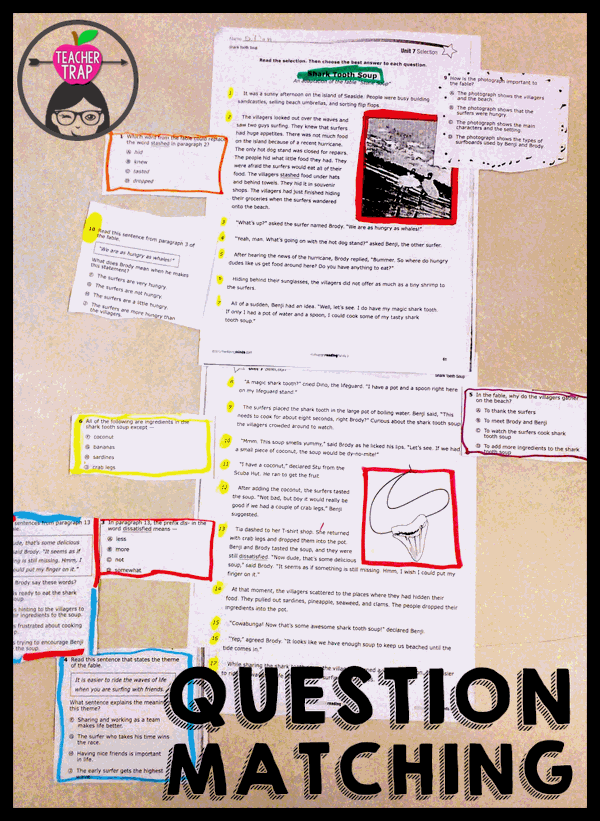
Another way to get hands on with reading passages is to make it BIG. One year, my teammates and I used a poster machine to make GIANT passages! (You could also just project the passage with a document camera or Smartboard, but the giant pages were more fun!) We used the giant passages to do the same type of question matching work. Students could actually come up and attach the question to where we’d hunt for our answer. After doing the matching as a whole class, students would then go work on the passage with a partner and try answering the questions.
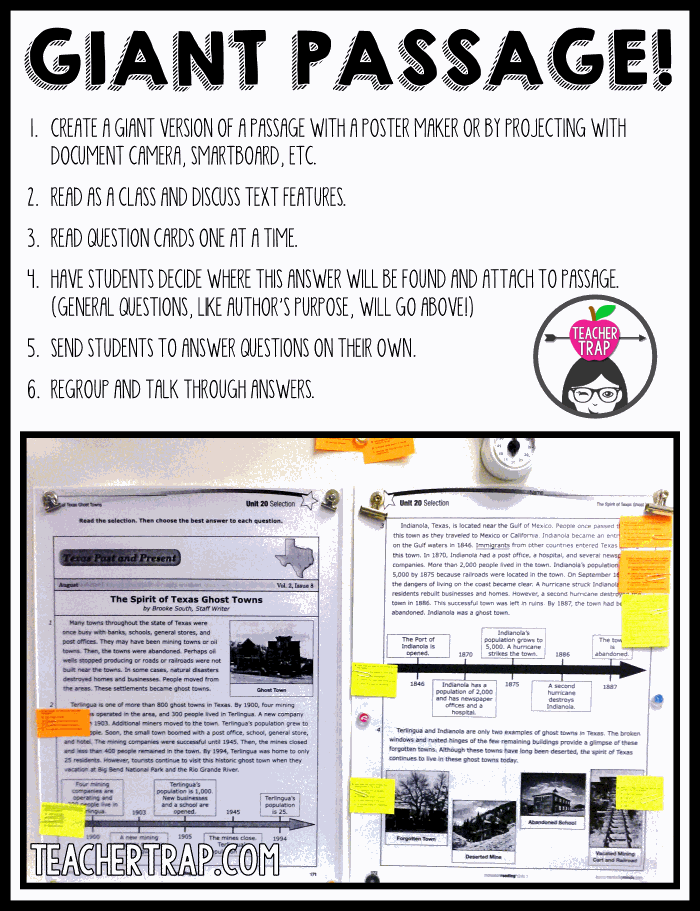
#4: Step Back From the Test
One mistake we make as teachers is getting too focused on the details of the test. We practice skills and teach test-taking strategies but fail to help students see the bigger picture (at least, I do!). But students can benefit from thinking about the test and questions as a whole. Help the kids step back from the test and reflect by analyzing questions and features of the test.
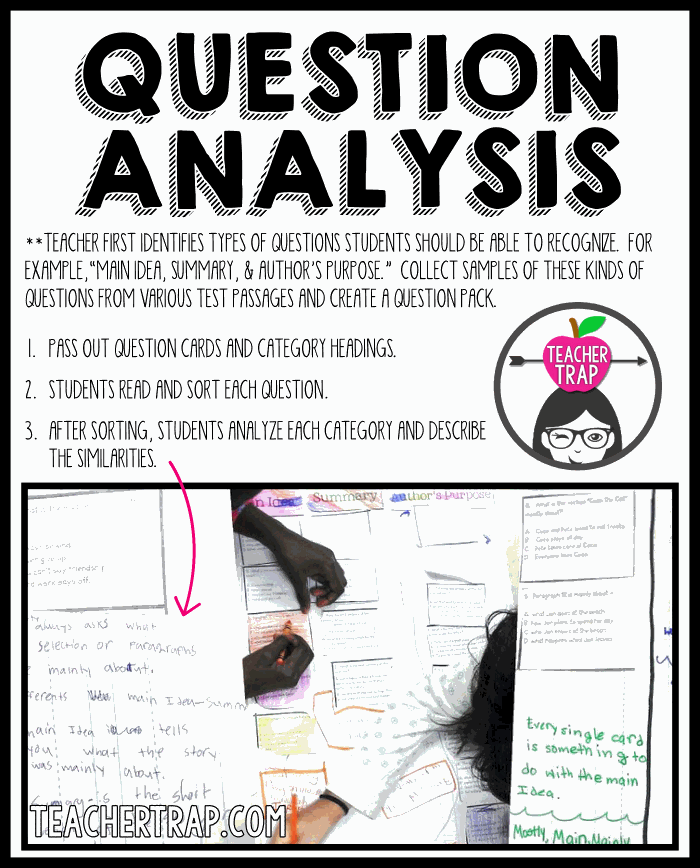
In the activity above, I gave students a set of prepared questions I’d gathered from various test passages. (If you don’t want to do the prep work, check out Reading Test Prep 101. The question cards are ready-to-go!) I’d realized that although I’d taught skills like “Author’s Purpose” and “Main Idea” my kids weren’t recognizing the questions! The question might say “This passage was most likely written to…” and my kids weren’t connecting it to “Author’s Purpose.” Big problem!
The kids read each of the questions and placed it in one of the categories. (The passages weren’t included so this wasn’t about ANSWERING the questions.) After all of the questions were sorted the students went back and looked at all the questions in a category and asked themselves, “What is similar about all of these questions?” Then the group would write about similarities in the questions. For example, you might notice that students made a list of common words in “Main Idea” questions: mainly, mostly, main, etc.
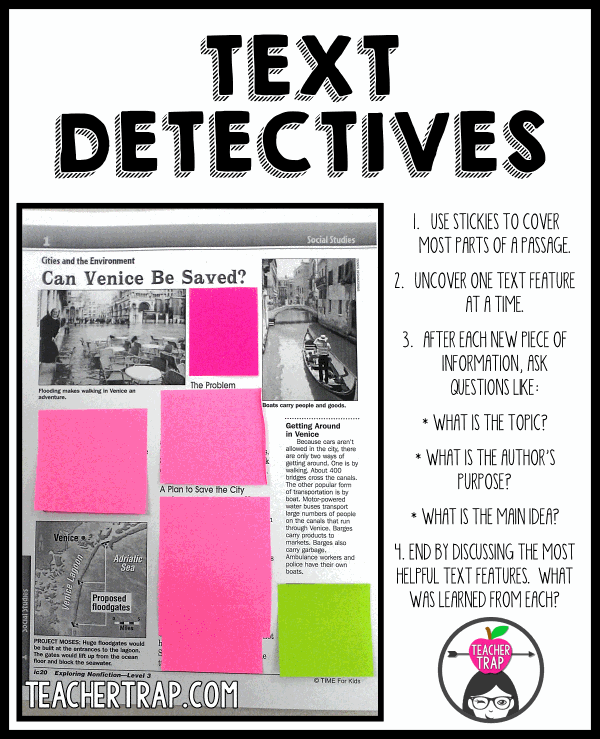
Another way to go “big picture” is with text features. Text features offer a wealth of information and are often directly linked to test questions, but my students tend to overlook them. To help demonstrate the importance of text features, I covered the passage above with a ton of sticky notes! I uncovered one little piece at a time, starting with the title. After uncovering, I’d ask a series of questions:
- What is the purpose of this feature?
- What does this feature tell us?
- What is the topic of this passage?
- What is the author’s purpose for writing this passage?
- What is the main idea of this text?
My students were amazed to find that you could answer almost all of the questions by just using a few pieces of information. They saw that the headings were helpful in determining both the author’s purpose and the main idea of each section. The text features told us a lot! This activity helped students learn to analyze the text features carefully BEFORE reading, and to refer to those features when answering test questions.
#5: Address Student Concerns
My last piece of advice is a little more general, but made a huge difference with my students. As adults, I think we sometimes forget how overwhelming and intimidating these high-stakes tests can be for children. The misconceptions that kids develop about testing are sometimes overlooked. Take the time to address these questions and concerns, and I promise you won’t be sorry!
You can create a simple KWL chart to uncover misinformation and questions. Begin by asking your class, “What do you KNOW about the test?” List all of their ideas, however far-fetched. The first year I did this, my kids thought things like you’d “flunk 3rd grade” if you failed the test, that you had to pass the test to go to college, that the test would be harder than anything they’d done all year, etc. Next, ask “What do WANT TO KNOW about the test?” My kids asked about the length, number of questions, bathroom breaks, what happens if you get sick, what if you don’t know a word, what if you don’t know an answer, who grades it, etc.
We used their questions and misconceptions to launch an awesome class discussion about the test. I answered all of their questions, reassured them, and gave things a positive spin. We talked about how the test was based on everything they’d learned this year and that it gave them a chance to “show off all of their knowledge!”
This process is a great way to build class community and set little minds at ease. Try it and you might be surprised at what your students have to say! 🙂
More Test Prep Resources
If you’re looking for more information or help with test prep, here are my most popular 3rd to 4th grade test prep resources.
The Reading Test Prep 101 pack includes ready-to-go activities similar to the question sorts and test analysis seen in this post.
A teacher sent me this amazing feedback: “I just breathed a HUGE sigh of relief now that I have this resource! I hate hate hate teaching to the test and all the panic that ensues. I am so thankful that you took the time to do this so that testing isn’t the worst time of the year anymore! Treating the tests as “another genre” is brilliant! The kids totally get that and some of the stress is alleviated. Wonderful resource. THANK YOU!!”
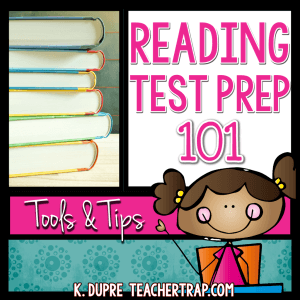
I’ve also created a spiraling Third Grade Math Review that is perfect for pre-teaching and re-teaching the important concepts throughout the year.
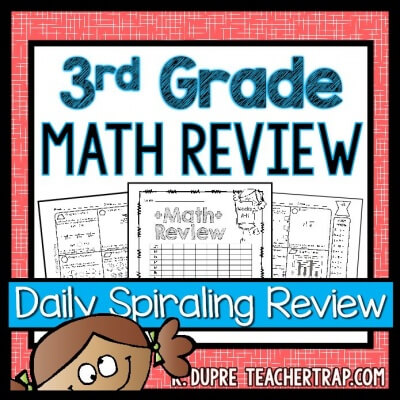
If you’re looking for a way to review before the big test, you might want to check out the Third Grade Math Review Stations. These engaging stations challenge students to apply their skills in new and novel situations.
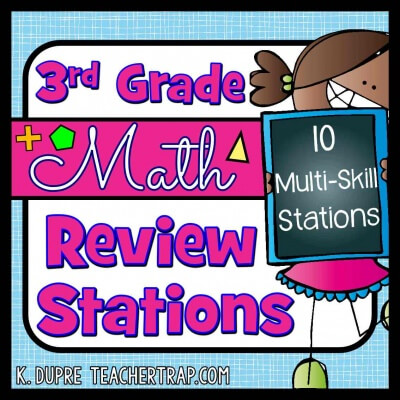
I hope you found some helpful tips here! Don’t let yourself get overwhelmed this testing season! We all do the best that we can for our students and our worth as teacher is more than our students’ test scores!


